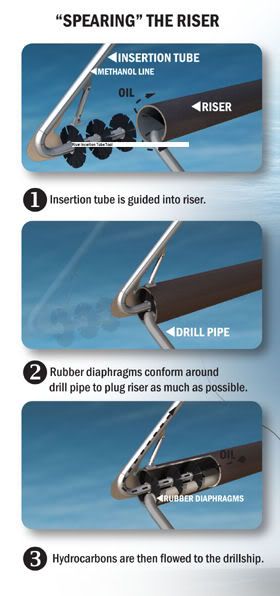BP has claimed that the new 4 inch Pipe inserted into the 21 Riser pipe is siphoning off 20% of the leaking oil. And then they updated that figure to 40% the next day.
Sounds good on the Morning News, but how did they get those numbers?
I spent a fair amount of time trying to figure out the cross-sectional area of a 4″ Pipe vs the cross-sectional area of a 21″ Riser Pipe (minus its reported .812″ wall thickness)
And those calcs ended up: roughly 4.4% of the larger [inner] area would be covered by the smaller [outer] area — BUT all that was just a Red Herring — it turns out due to this BP picture (and its large rubber gaskets)

Looks good on Paper. Could the insert pipe with its many rubber stoppers actually be blocking up to 40% of the leaking oil from the larger pipe?
Yet one wonders, where did that 40% number come from, especially since BP is not all that keen on measuring and monitoring?
